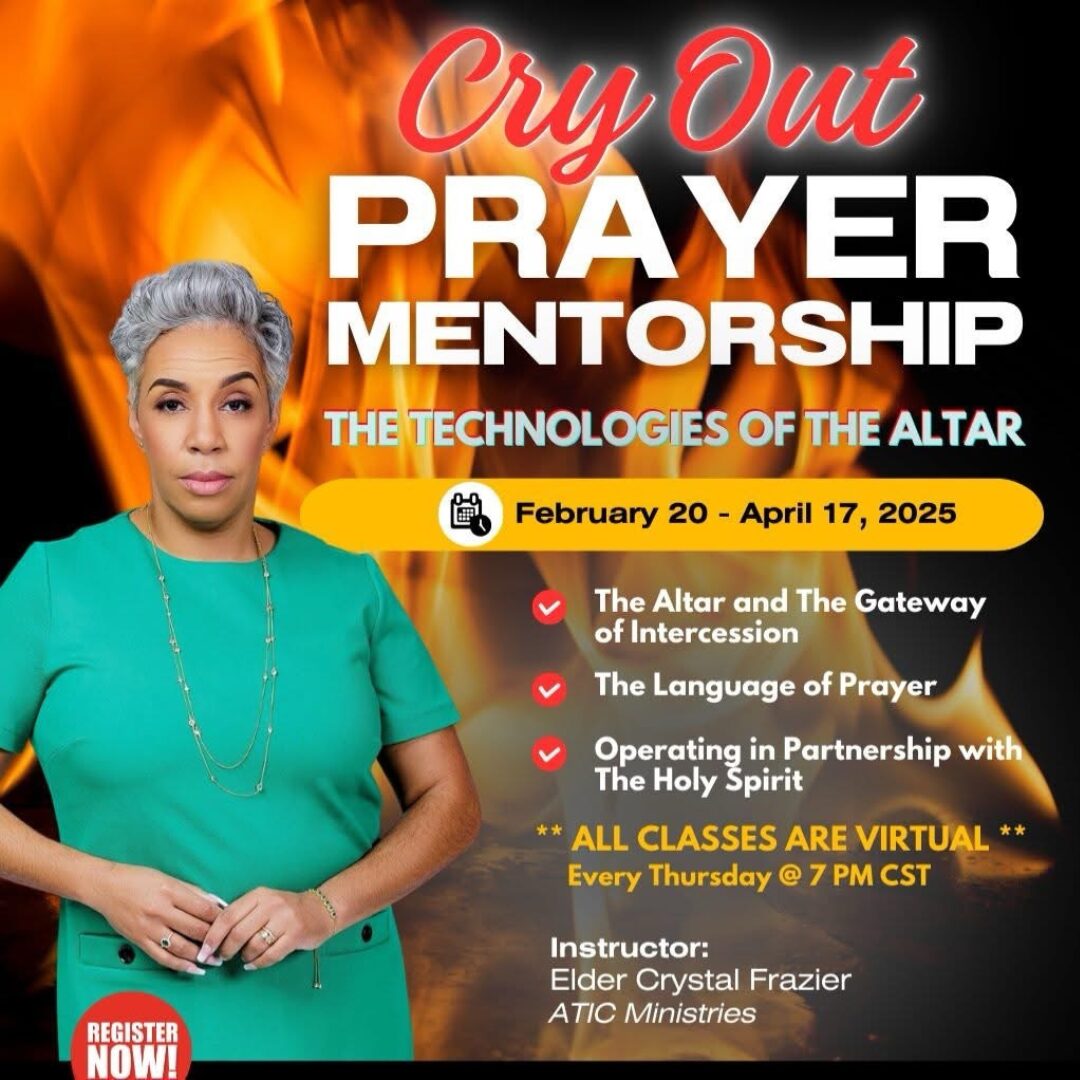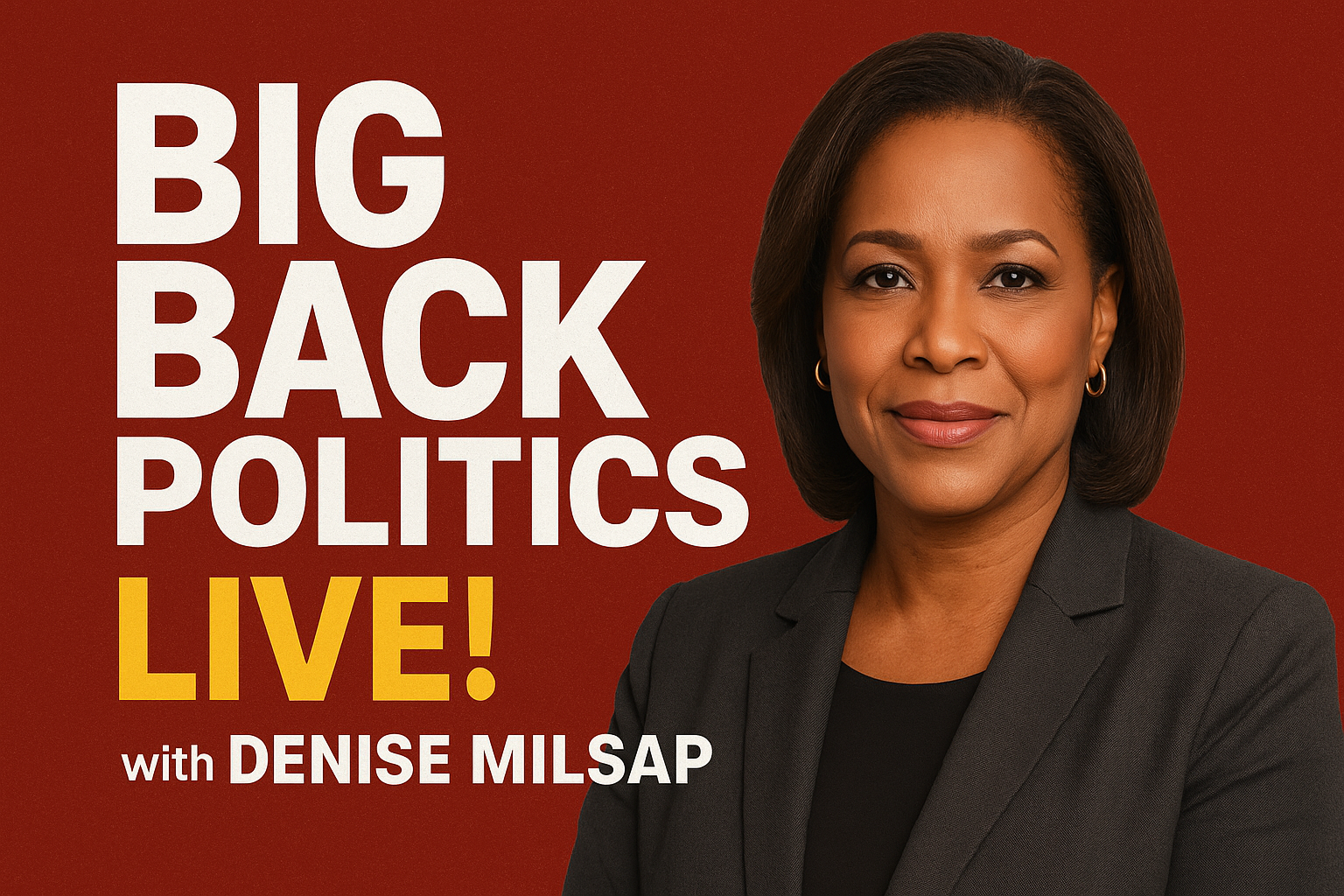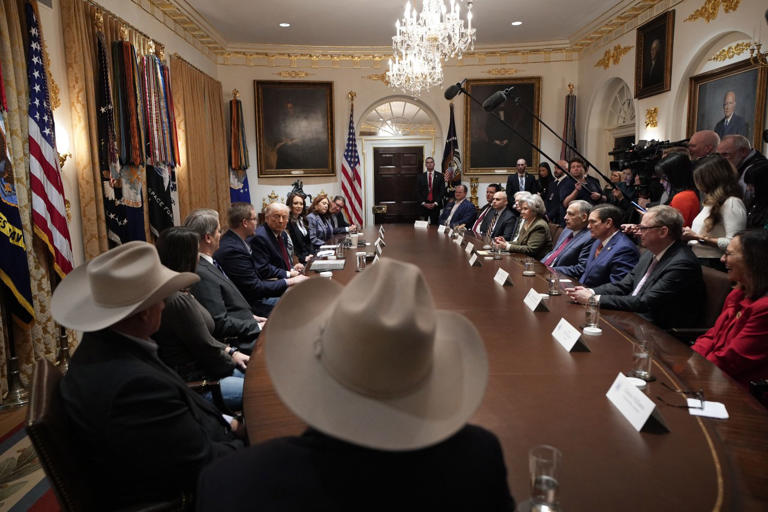Major Takeaways:
Texas is engaging in mid-decade partisan gerrymandering, a non-standard practice expected to add five new Republican seats to the U.S. House and dilute the influence of communities of color.
While not illegal, this move has prompted countermeasures from states like California and could insulate the president from typical midterm election accountability.
Solutions to combat gerrymandering include independent, citizen-led redistricting commissions and stronger federal legislation to protect voting rights and ensure fair representation.
Gerrymandering in Texas: How Redistricting Impacts Voter Power and Elections
This week on Viewpoint. Instead of voters treating their politicians, it’s politicians choosing their voters. What exactly is gerrymandering and what’s happening in Texas then? I didn’t always get the food that was necessary.
Sometimes I had to go a little hungry because we just couldn’t afford it for that day. We cover the prolonged stress and impact of always struggling to afford the basics. I’m Marty Peterson.
And I’m Gary Price. These stories in-depth this week on your Public Affairs magazine, Viewpoints. Do Crohn’s disease or ulcerative colitis symptoms keep coming back? Tremphaya, gaselkomab, may help, with rapid remission achieved at 12 weeks and lasting clinical remission at one year.
Some even saw visible improvement of their intestinal lining at 12 weeks and one year. Tremphaya is a prescription medicine used to treat adults with moderately to severely active Crohn’s disease and adults with moderately to severely active ulcerative colitis. Serious allergic reactions and increased risk of infections and liver problems may occur.
Before treatment, your doctor should check you for infections and tuberculosis. Tell your doctor if you have an infection, flu-like symptoms, or if you need a vaccine. Healing is possible with Tremphaya.
Approximately 3 out of 10 patients were in endoscopic remission at one year, based on areas visualized on colonoscopy, which may not represent the deeper bowel layer or entire GI tract. Individual results may vary. Ask your doctor about Tremphaya today.
Call 1-800-526-7736 to learn more or visit Tremphayaradio.com. In Texas, political maps are once again at the center of controversy. Late last month, Governor Greg Abbott signed a new congressional map into law, which will be used to elect members to the U.S. House of Representatives. Civil rights groups are arguing that the new map gives Republicans an unfair partisan advantage in the upcoming midterm elections and dilutes the voting power of certain communities.
What Texas is being accused of is called gerrymandering, and if successful, this precedent could change elections forever. Gerrymandering is when politicians manipulate voting district lines for their ability to entrench their power, and it often distorts election results and weakens accountability and often silences the voices of communities, particularly communities of color, young voters, working families. That’s Omar Noraldin, senior vice president of policy and litigation for the grassroots organization Common Cause.
He explains how there can be different drivers behind gerrymandering. It could be partisan gerrymandering, which means the lines are drawn to entrench the power and ensure that candidates from, you know, the Republican Party or the Democratic Party are elected. But also there’s racial gerrymandering, which is used to make sure that the voting power of, for example, Black communities isn’t harnessed through their voting.
And the lines are drawn in a way that splits up communities based on their racial identity. In this recent case in Texas, Noraldin says politicians are engaging in partisan gerrymandering since the updated voting districts are expected to add five additional Republican seats in the U.S. House. Another red flag is that the state is redrawing its voting map in the middle of the decade instead of waiting until after the census.
What the census is, is a counting of the number of people that, you know, live in the United States, and that’s done every 10 years. People move from state to state. People move from city to city.
And to ensure that our congressional districts, so these are the voting districts that elect members of Congress, are proportional to each other, have roughly the same amount of people, that the district lines within a state are drawn in a way that accounts for the voting power of communities of interest. So people that live together, work together, you know, view themselves as a cohesive community, that those communities, as people move, are kind of held together within single districts. And that happens every 10 years.
He adds that what Republican leaders in Texas are doing isn’t illegal or unlawful. However, mid-decade redistricting is not standard practice and ignores crucial census data. President Donald Trump has publicly supported the updated map, reinforcing the idea that redistricting serves Republican interests.
After this, Democratic California Governor Gavin Newsom publicly floated a counterattack, suggesting his state redraw its maps to add five more Democratic House seats. He and others, state leaders in the state, clarify that what they’re doing is in response to Texas and not just because Texas is doing it for Republicans and California is going to do it for Democrats. But what they’re trying to achieve is national balance in the congressional maps.
So, so to speak, in their words, to neutralize what Texas is doing so that President Trump doesn’t have a Congress that is unaccountable. Bruce Spiver is a senior vice president at the Campaign Legal Center, a nonprofit nonpartisan group focused on voting rights. He explains the difference in how California is redistricting compared to Texas.
They have enacted a law that they said would be temporary through 2030 and that would only go into effect if Texas actually goes through with this plan. It would redistrict in California in a way that created five new Democratic districts. At least that’s the intention.
But they’re unlike Texas. They’re going to put that before the people of California who will get a chance to vote on whether that goes into effect or not. In addition to Texas, states like New York, Illinois and Maryland are also considering similar plans.
However, some states have provisions in their constitutions that make mid-decade redistricting much more difficult. Currently, there’s no sweeping federal law limiting gerrymandering. So, for example, in Florida, Florida actually bans partisan gerrymandering as part of the Florida Constitution.
So the way in which district lines are drawn in many states is by the state legislature. And so the state can pass laws to govern how the state legislature should do this. The other kind of check on this power is what’s called independent redistricting.
And there are different ways to conduct independent redistricting. One way is through independent redistricting commissions or citizen led redistricting commissions. And so here it would be people who apply to be part of these redistricting commissions that actually draw the district lines rather than politicians.
There are plenty of ways to draw district maps unfairly. But what does it take to draw them in a way that accurately represents the political voice of communities? Map making is a complex science, but Spiva says there are some ways to tell whether a district has been gerrymandered or not. If you have a state that split 50-50 among, say, Democrats and Republicans, generally half of the seats ought to go to Republicans and half ought to go to the Democrats.
Not going to be perfect. You have wave elections and sometimes it’s candidate quality or whatever. But, you know, over time, roughly you would expect it to be about like that.
And often what we’ve seen with partisan gerrymandering is you have a 50-50 state, take like Wisconsin, where the Republicans who did the partisan gerrymandering there control an overwhelming majority of the delegation, you know, way more than 50 percent. Also, there are traditional redistricting criteria such as compactness so the district doesn’t spread out all over the state. And it’s not a constitutional principle, but it’s something that is considered a standard, that districts be contiguous, you know, that you don’t put one part of the district here and then skip over a big geographic area and put another part over here.
In the case of Texas, this sudden off-cycle gerrymandering has given Republicans an advantage heading into next year’s midterms, which traditionally are more challenging for a sitting president and their corresponding political party. Lawsuits have been filed in an attempt to block the updated map from taking effect. But if it passes, Spival believes it will set a dangerous new precedent that undercuts voting rights and democracy.
The implications are that the people’s voice is really taken away, right? I mean, because essentially politicians are choosing their voters and can keep themselves in office, even if there was a groundswell among people in their former districts to get rid of them. I think immediate implications is it also and this is the intention, it insulates the president from the typical Democratic against Maldi, Democratic check that the midterm elections pose for all presidents of all parties. Right.
I mean, it’s almost always the case in a president’s first term or in this case, the second term, but not back to back with his first term. The president in power loses seats in Congress, almost always the case. It happened with Barack Obama.
It happened with George W. Bush. It happened with Bill Clinton. And so what we need in this country is we need national legislation.
To find out more about Omar Nouraldine, Bruce Spiva and all our featured guests, visit ViewpointsRadio.org. For more behind the scenes, follow us at Viewpoints Radio on X Facebook and Instagram. This segment was written and produced by Grace Galanti. Our executive producer is Amir Zaveri.
Studio production by Jason Dickey. I’m Gary Price. Coming up, one in seven households in the U.S. are food insecure.
And this number is growing when Viewpoints returns. Oh, could this vintage store be any cuter? Right. And the best part, they accept Discover.
Accept Discover in a little place like this? I don’t think so, Jennifer. Oh, yeah. Huh.
Discover’s accepted where I like to shop. Come on, baby. Get with the times.
Right. So we shouldn’t get the parachute pants? These are making a comeback, I think. Discover is accepted at 99 percent of places that take credit cards nationwide.
Based on the February 2025 Nielsen report. Ah, that’s the sound of someone who’s misplaced. My debit card.
Their debit card. Where did I leave that thing? Not at the gas pump or the checkout counter or the roof of your car. Now, if he has the Chase mobile app, he can use Card Lock.
Wait, I could just lock my card. Yep. Just a few tippy taps on his phone.
And that sound. That’s peace of mind from Chase. Chase mobile app is available for select mobile devices.
Message and data rates may apply. JP Morgan Chase Bank, N.A., Member FDIC. I can’t believe how spotless my floors look after using the Swiffer Power Mop.
No more dragging around a heavy mop and messy bucket. Now I get the same deep clean without all the work. Thanks to the powerful solution and scrubbing pad of the Swiffer Power Mop, dirt and grime don’t stand a chance and I don’t break a sweat.
Mic drop, I mean mop drop. A smarter way to mop. Try it or your money back.
Y’all ready for Gillette’s best shave? Try Gillette Labs with five ultra thin blades, a built in exfoliating bar, a precision trimmer on the back for sharp lineups. Gillette Labs delivers that smooth shave. Plus, and check this out, with one refill, you’ll get up to 30 shaves.
And on average, the blades last 50 percent longer than Gillette Fusion. Got something special coming up and you got to look good? Check out Gillette Labs. The best a man can get.
Gillette Labs also available in heated. Imagine scrubbing floors, washing windows and then cleaning for several more hours. At the end of the day, you receive $200 and half of this money goes towards groceries for your family.
But that $100 that once stretched a week or two now disappears in days for Veronique Valdez, a high school student living in Las Vegas, Nevada. This is a weekly predicament. Her mom cleans houses for a living and she often helps as well.
In their eyes, food isn’t just priced in dollars. It’s priced in hours of labor. And lately, the hours never stretch far enough.
The U.S. Department of Agriculture reports that overall food prices have risen by more than 25 percent since 2020. And while inflation has slowed, wages haven’t kept up for many families. For Valdez, she comes from a separated family where money’s always been tight.
I grew up not being able to get, you know, a lot of things. It was either choosing between eating food or like having like either groceries or like a sweet little treat. And sometimes I didn’t always get the food that was necessary.
Sometimes I had to go a little hungry because we just couldn’t afford it for that day. I was temporarily homeless, living in a car with my father. Today, Valdez is a senior in high school and is looking forward to college.
She’s a member of the Boys and Girls Club of Southern Nevada, a nonprofit that provides a safe space for kids and teens in between school and home. The organization is a national initiative that provides educational support, extracurricular activities, mentorship and more. For Valdez, it’s what kept her on track despite all of the ups and downs happening at home.
I didn’t get the experience of having a mother-in-law because she was always working. She was always struggling to pay for the rent, pay for the food. And it affected me a lot mentally seeing how much my mother had to work to provide for me.
It did leave a lot on my conscience. I felt very guilty. I was raised to never ask for anything, never.
If I saw a cute toy or something shiny, like I would just have to observe and walk away because I knew asking would also hurt my mother because she knew she couldn’t give me the things that I wanted. According to the Census Bureau, nearly 37 million Americans lived in poverty in 2023. About one in seven households were food insecure, meaning they lacked reliable access to affordable, nutritious food.
For Valdez and her mom, the rise in grocery bills has led to a lot of worry and uncertainty. We’ll go to the store, right? The total is like thirty five dollars for like a few things that we needed. And generally we needed a lot more, but we just couldn’t afford it because those thirty five dollars cost me over two hours of hard cleaning and work.
And it’s like that’s kind of how we view things. Every time we go to the store or everything, it’s like, OK, how many hours of work do I have to go to make up this money? And the number just keeps getting higher and higher. And it’s been so dreadful.
Like we have to cut back on a lot of expenses. Like, for example, like I’ve been needing clothing for like a good minute and we’ve been unable to because like it’s becoming so expensive to just get the essential things that we needed. And their story reflects what’s happening across the country.
An expert on this issue is Jean-Martin Bauer, director of food security and nutrition analysis at the United Nations World Food Program. He’s also the author of the book The New Breadline, Hunger and Hope in the 21st Century. About 18 million households in the U.S. suffer from food insecurity.
I hasten to add that food insecurity measured by USDA in the U.S. is a very different phenomenon to what we measure internationally. But it still means that people are consuming less food. They’re eating less preferred foods and they don’t know where their next meal is coming from.
And that’s a problem that’s getting worse in the U.S. right now. I’d like to highlight the fact that food security is very dynamic. It changes from year to year.
It changes according to the geography you’re in, according to the social group you’re in. It’s a problem that needs to be understood, tracked, talked about. It’s also a very uncomfortable problem.
And maybe that’s why it’s so difficult to tackle it head on. It’s uncomfortable because it’s about inequalities. It’s about injustice.
It’s about disparities that break along racial lines. The drivers behind this problem aren’t new. Prices for everything have climbed and stayed high while pandemic-era safety nets and other resources have been pulled back.
Those organizations like food banks that need to be able to do is cater for the increased demand. They are at the front line. That’s the place people go to first when they’re in trouble.
And the food banks, but also all the other components of the safety nets we have in this country, they need to be strengthened. We need to boost them rather than curtail them at a time of high inflation. For instance, the Supplemental Nutrition Assistance Program, or SNAP, remains the country’s largest nutrition assistance program.
Yet these benefits haven’t kept up with inflation. Last year, according to the Department of Agriculture, more than 41 million Americans, or 12 percent of the country, received SNAP benefits each month. There’s a fear that the safety net is being pulled back or could be pulled back in the future.
The 18 million households in the U.S. that suffer from food insecurity might need more assistance. We need to make sure that these programs, again, upgrade the transfers, the resources, the support they provide to families in need. And that’s, again, keeping up with inflation is the basic thing that SNAP should be doing right now.
But then you have an impact on those families that are suffering from food insecurity right now. It’s a traumatic experience. It’s something that impacts families, not just in the moment where they experience food insecurity, but for over the long term.
There is a an impact of the stress you experience when you go through food security. It’s not just the hunger you feel. It’s the, again, the prolonged stress.
It’s not good for children. It’s not good for the individuals that live through it. This prolonged worry around food and where the next meal will come from is something that Valdez is all too familiar with.
For her, the Boys and Girls Club of Southern Nevada was a supportive safety net that she and her mom could fall back on. My mom had no one to lean on. She didn’t know who to lean on.
And it was a little difficult. But like I said, thanks to the organization, I was given a lot of resources and a lot of experiences and a lot of support that me and my mom really needed. For Valdez and her mother, food insecurity means years of sacrifice and worry.
For Bauer, it’s a national and global challenge that threatens stability itself. There’s also an impact on the communities that are exposed to hunger. Hunger is a threat to social cohesion, put simply.
That means neighbors getting along. It means us being able to live as people who trust each other. Hunger is well, food is a an essential need.
It’s something we all need every day, multiple times a day. We need to eat. And when you don’t get that, it undermines the very fabric of society.
An essential promise of a functional society is that people’s basic needs are satisfied. Food, water, shelter. If you threaten those, all bets are off.
With millions struggling to put food on the table. The question is whether we’ll strengthen current safety nets or allow one of our most basic needs to slip further out of reach. Join us for part two of this story next week.
To find out more about this topic and our guests, Veronique Valdez and Jean-Martin Bauer, head to Viewpointsradio.org. This segment was written by our executive producer, Amira Zaveri. Our studio manager is Jason Dickey. I’m Marty Peterson.
This segment is sponsored by Capital One. Banking with Capital One helps you keep more money in your wallet with no fees or minimums on checking accounts and no overdraft fees. What’s in your wallet? Terms apply.
See CapitalOne.com slash bank for details. Capital One N.A., member FDIC. Viewpoints returns in just a moment.
Moms and dads, do you wish you could know where your kids shoes are at all times? Now you can with Skechers newest Apple AirTag compatible sneakers. Find My Skechers. It’s the latest genius invention from Skechers, the comfort technology company.
With Find My Skechers, there’s a clever hidden AirTag compartment under the shoes insole. You just pull up the insole and pop in the AirTag. It’s sleek, secure, and your child can’t feel it or see it.
Then you can check where your kids shoes are on the Find My app. Imagine that. Just one look at the phone and you can see where your kids shoes are.
No more wondering or worrying. It’s as easy as that. Plus, they’re machine washable and durable, so they’re long lasting.
And Find My Skechers are available for boys and girls. Look, we all know Skechers is famous for comfort, and now they’re giving us comfort of mind when it comes to our kids. Get Find My Skechers, Skechers newest Apple AirTag compatible sneakers at Skechers.com, a Skechers store near you or wherever kids shoes are sold.
Apple AirTag sold separately. This is Viewpoints Explained. I’m Ebony McMorris.
Americans are drinking less and young people are driving this trend. A New Gallup poll out last month reports that 54 percent of U.S. adults say they drink alcohol. This is the lowest percentage since the survey began in 1939.
More than half of Americans now believe even more moderate drinking is bad for you. Up from less than a third just a few years ago among younger adults. This change is even sharper.
Only about half of people under 35 drink today compared to much higher levels in the past. And roughly two thirds of that age group now say moderate drinking isn’t healthy. Go younger.
And teens only 7 percent report drinking in the past month, according to the National Institute on Alcohol Abuse and Alcoholism. So what’s behind this big shift? Health is one big factor. Gen Z and millennials are more likely to prioritize mental clarity and relaxation.
And there are more options today to do just that from creative mocktails to wellness drinks like a CBD or hemp seltzer. More communities are also creating spaces where people can socialize without the pressure to drink. Instead of meeting up for a boozy brunch or happy hour, many gatherings now center on coffee, a fun activity, an exercise class or simply time outside.
For many, it’s less about cutting alcohol out completely and more about making intentional choices about when and where to drink. The bottom line, drinking is no longer the default. And the next generation is redefining this long held ritual.
That’s Viewpoint to explain for this week. More in a moment. Welcome to Culture Crash, where we examine what’s new and old in entertainment.
Since its launch in late 2019, I’ve struggled to wrap my arms around what exactly Apple TV Plus is. Of course, I know it’s the TV and streaming hub for one of the ten biggest companies in the world, but its general lack of promotion has always confused me. Sometimes I will see a rare poster for a new show on Apple and I’ll be left to wonder if it’s real or if it’s a screenshot from an SNL bit or something.
But once you actually do turn the service on, you tend to see big stars, simple concepts and huge budgets. Apple shows like Ted Lasso, Shrinking, Presumed Innocent and The Studio have managed to bring eyeballs and award season success to the tech giant. And their slate for fall 2025 looks promising as well.
The show I’m most excited for is Pluribus, a science fiction series from Breaking Bad creator Vince Gilligan, starring Ray Sehorne, who stole many hearts, including my own as Kim Wexler on the incredible Breaking Bad spinoff Better Call Saul. Details of Pluribus are scarce, but the show is set to premiere on November 7th and Gilligan and Sehorne are more than enough to sell me on a new project. Before then, though, Apple TV Plus will premiere The Savant, starring Oscar winning actress Jessica Chastain, about a digital interrupter who seeks to infiltrate hate groups on the Internet to prevent public attacks.
The crime thriller comes from Melissa James Gibson, a playwright with experience writing for the Americans and House of Cards. On October 10th, Apple will launch The Last Frontier, which stars Jason Clark in a thriller about a U.S. marshal in the remote wilderness of Alaska. This fall, Apple will also stream Mr. Scorsese, a documentary series about Martin Scorsese and Down Cemetery Road, an adaptation of the thriller novel of the same name, starring Ruth Wilson and Emma Thompson.
Will all of these shows be good? Who’s to say? But true to the Apple TV Plus formula, they promise huge names and familiar situations, and that’s enough for me to at least check out what they’re cooking over there at the computer company. I’m Evan Rook. My perfect day as sand, salt, water and friends, but my moderate to severe plaque psoriasis can take me out of the moment.
Now I’m all in with clearer skin. Thanks to Sky Rizzy, Rizz and Kizzum at Rizza, a prescription only 150 milligram injection for adults who are candidates for systemic or phototherapy. With Sky Rizzy, most people saw 90 percent clearer skin, and many were even 100 percent plaque free at four months.
Sky Rizzy is just four doses a year after two starter doses. Don’t use if allergic to Sky Rizzy, serious allergic reactions, increased infections or lower ability to fight that may occur before treatment, get checked for infections and tuberculosis. Tell your doctor about any flu like symptoms or vaccines.
Thanks to Sky Rizzy. There’s nothing on my skin, and that means everything. Ask your doctor about Sky Rizzy, the number one dermatologist prescribed biologic in psoriasis.
Visit Sky Rizzy dot com or call one eight six six Sky Rizzy to learn more. And that’s Viewpoints for this week. Follow us on Twitter, Facebook and Instagram to learn more about upcoming shows and find a library of past programs on Apple podcasts, Google Play and Spotify.
Plus, you’ll always find previous segments and more information about our guests at ViewpointsRadio.org. Join us again next week for another edition of Viewpoints.















